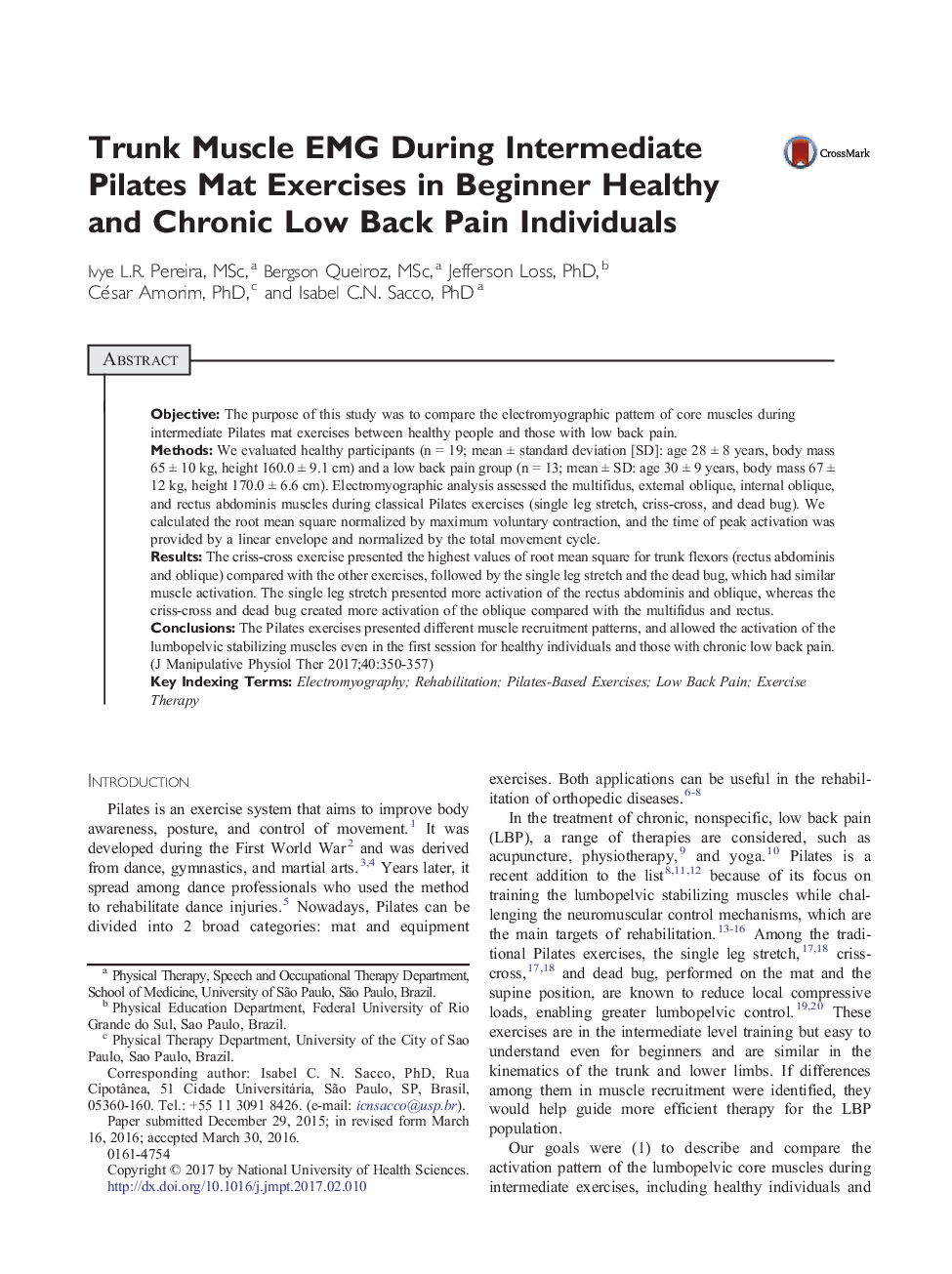| Article ID | Journal | Published Year | Pages | File Type |
|---|---|---|---|---|
| 5564163 | Journal of Manipulative and Physiological Therapeutics | 2017 | 8 Pages |
ObjectiveThe purpose of this study was to compare the electromyographic pattern of core muscles during intermediate Pilates mat exercises between healthy people and those with low back pain.MethodsWe evaluated healthy participants (n = 19; mean ± standard deviation [SD]: age 28 ± 8 years, body mass 65 ± 10 kg, height 160.0 ± 9.1 cm) and a low back pain group (n = 13; mean ± SD: age 30 ± 9 years, body mass 67 ± 12 kg, height 170.0 ± 6.6 cm). Electromyographic analysis assessed the multifidus, external oblique, internal oblique, and rectus abdominis muscles during classical Pilates exercises (single leg stretch, criss-cross, and dead bug). We calculated the root mean square normalized by maximum voluntary contraction, and the time of peak activation was provided by a linear envelope and normalized by the total movement cycle.ResultsThe criss-cross exercise presented the highest values of root mean square for trunk flexors (rectus abdominis and oblique) compared with the other exercises, followed by the single leg stretch and the dead bug, which had similar muscle activation. The single leg stretch presented more activation of the rectus abdominis and oblique, whereas the criss-cross and dead bug created more activation of the oblique compared with the multifidus and rectus.ConclusionsThe Pilates exercises presented different muscle recruitment patterns, and allowed the activation of the lumbopelvic stabilizing muscles even in the first session for healthy individuals and those with chronic low back pain.
